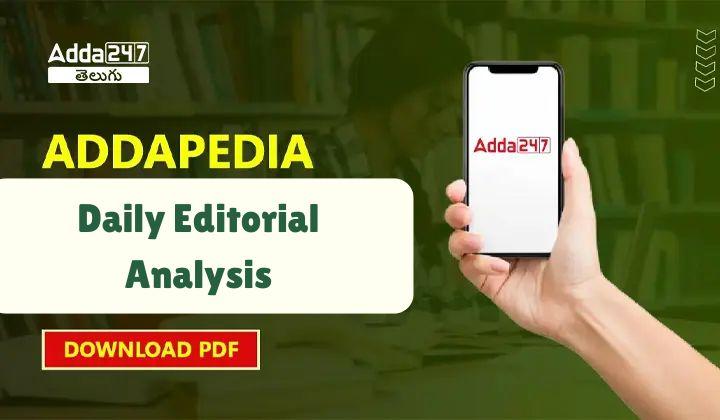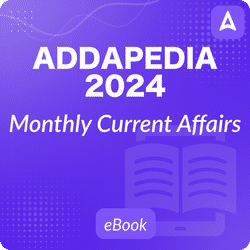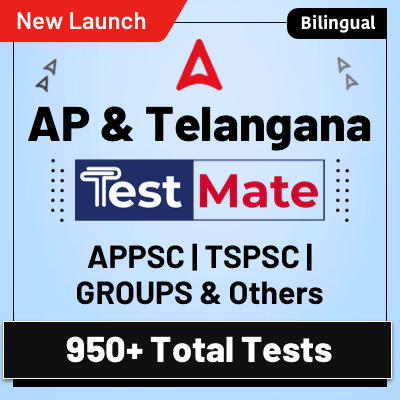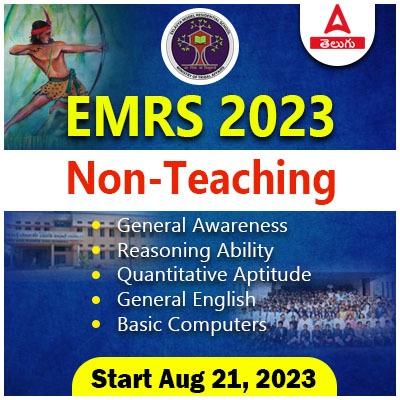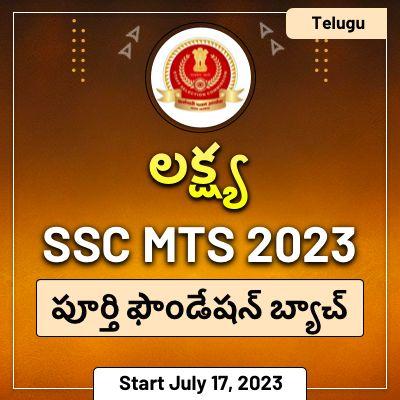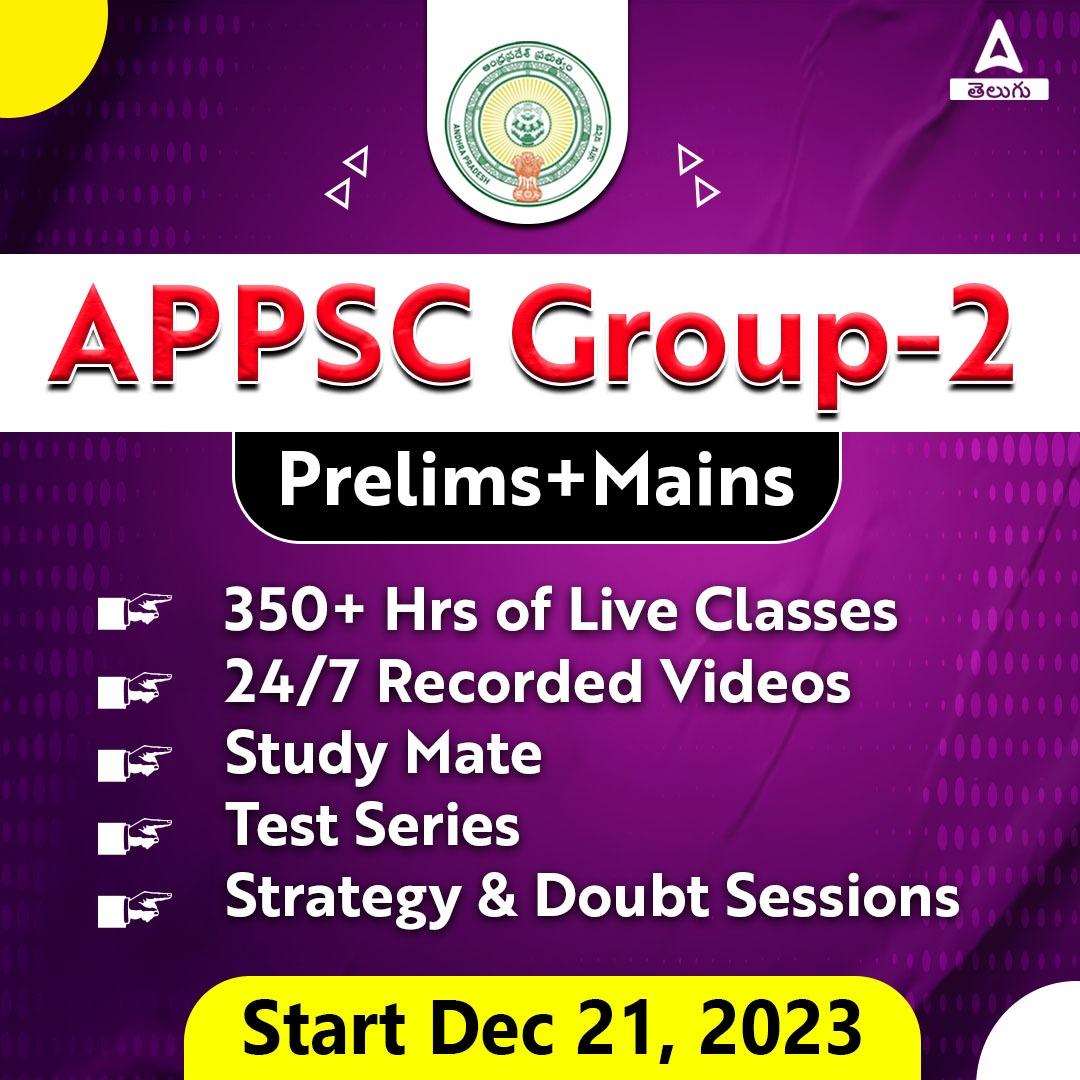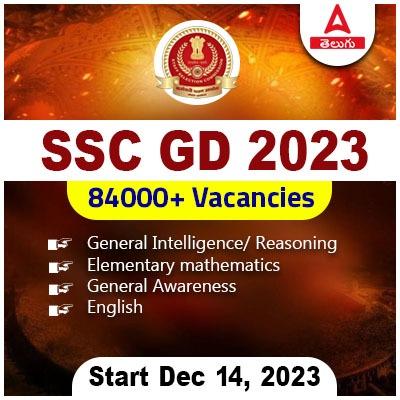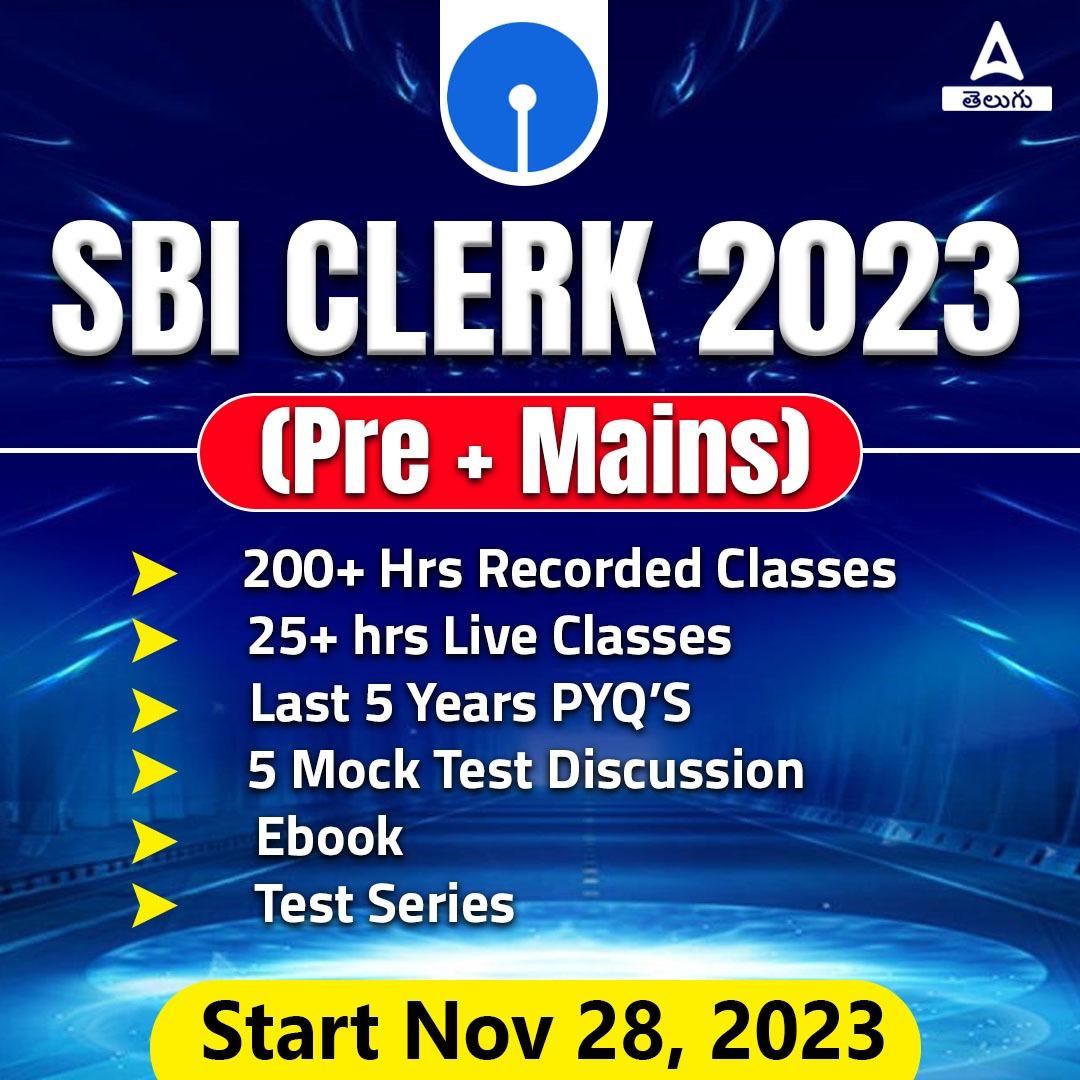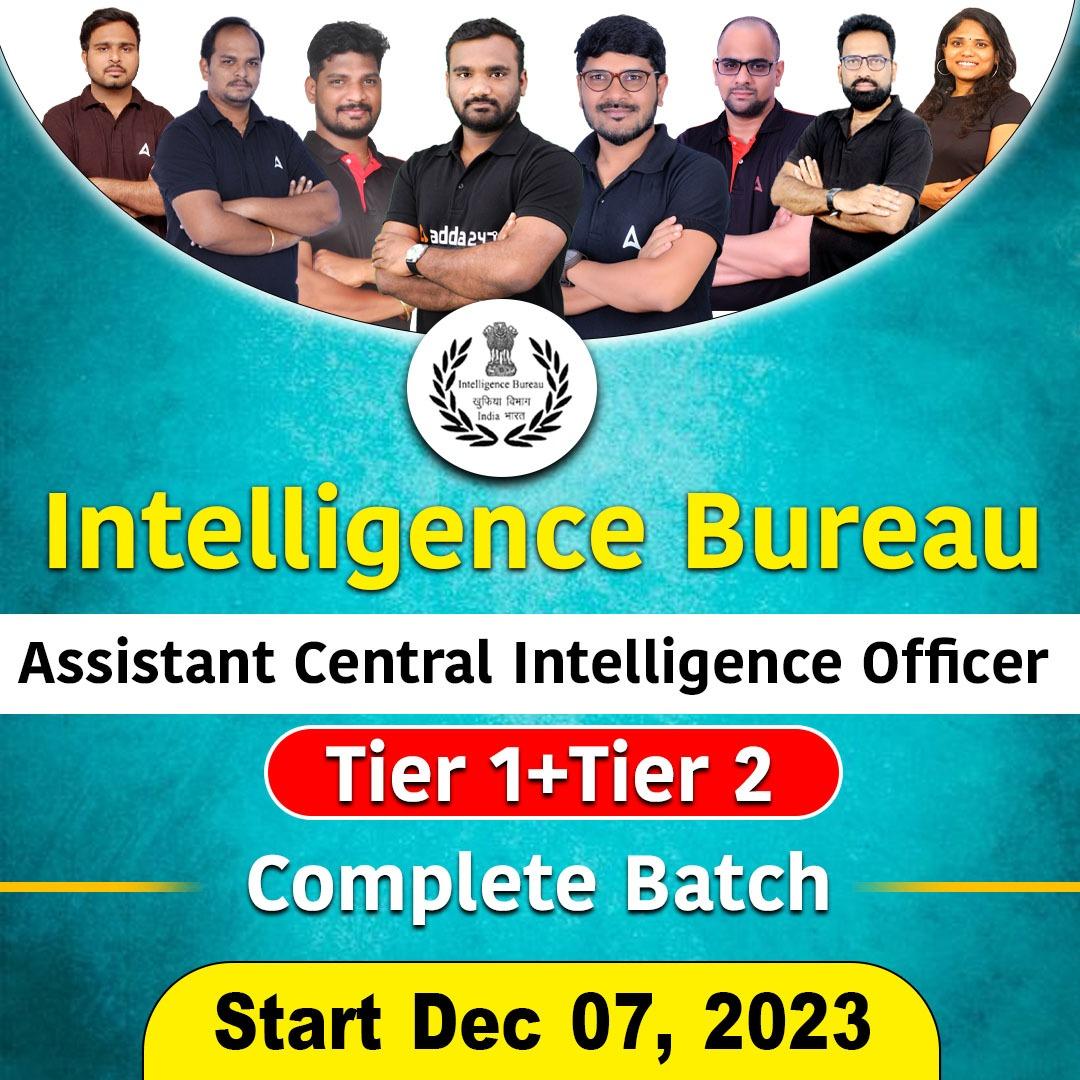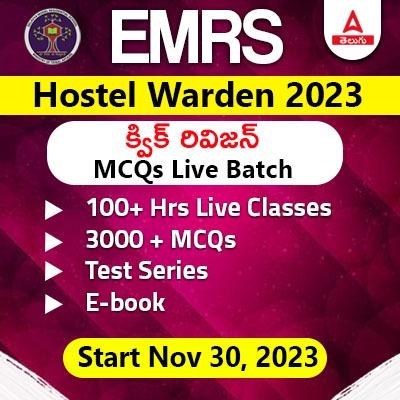Addapedia Editorial: Daily News Editorial PDF, 02 August 2024: Hello Aspirants ADDA 247 is back with Editorial Analysis in English. your daily source for in-depth news coverage and insightful editorial analysis. In this section, we bring you a comprehensive look at the latest national and international events, current affairs, and the historical context behind today’s most pressing topics. Our goal is to provide you with a well-rounded perspective on the news, helping you understand not just the headlines, but the intricate details and background that shape our world. This ADDAPEDIA Editorial Analysis will help you understand the National and International events Current affairs and the background of a particular topic. This comprehensive News analysis will help you in Clearing CA and Interview for many exams.
Adda247 APP
Pumped Storage Projects
The Union Budget for 2024-25 promised that “a policy for promoting pumped storage projects will be brought out for electricity storage and facilitating smooth integration of the growing share of renewable energy with its variable and intermittent nature.”
What is pumped storage project?
- Pumped storage hydropower (PSH) is a type of hydroelectric energy storage that uses excess electricity to pump water from a lower reservoir to a higher reservoir.
- This stored water can then be released through turbines to generate electricity when demand is high.
- PSH plants are an important tool for integrating renewable energy sources like solar and wind power into the grid.
- They can help to balance supply and demand, ensuring a reliable and stable power supply
Why is pumped storage important??
- Meet renewable targets: The share of actual renewable power generation will increase in times to come, but this power will necessarily vary and will be “unstable”. India would need to ramp up its pumped storage capacity by several times if it wants to meet its renewable power generation targets.
- Grid stability: PSH plants can respond quickly to changes in demand, helping to stabilize the grid. PSH helps meet peak electricity demand, reducing strain on the grid.
- Energy storage: PSH plants can store excess energy for later use, helping to integrate renewable energy sources into the grid.
- Black start capability: PSH plants can be used to restart the grid in the event of a blackout.
What are some challenges associated with Pumped Storage Projects?
- High Upfront Costs: Building a PSH facility requires significant investment.
- Geographical Limitations: PSH requires a suitable geography, with a significant height difference between the two reservoirs.
- Environmental Concerns: PSH can impact local ecosystems, affecting aquatic life and water quality.
- Scalability: PSH facilities are typically large, making them less suitable for smaller-scale energy storage needs.
- Policy and Regulation: Wider deployment of PSH requires supportive policies and regulations, which can be lacking in some regions
Does India have pumped storage?
- India has 3.3GW of pumped storage. Main ones are in Nagarjunasagar, Kadana, Kadamparai, Panchet and Bhira.
- China leads the world with 50GW of pumped storage supporting 1,300GW of wind and solar energy.
- Pumped storage is of two types: on river and off river. On-river is like any hydroelectric project supplied by a river. Off-river projects are those that have two reservoirs at two different levels to which the water can be pumped up or let down under gravity in a closed loop.
- When there is surplus power, water is pumped up from the lower reservoir to the upper, and when power is needed the water can flow down to turn the turbines and generate power. One such project is at Kadamparai, Tamil Nadu.
Can you answer the following question?
Pumped storage hydropower (PSH) has emerged as a key technology for transitioning to greener energy. Discuss the operational principles of PSH, its advantages and the challenges associated with its wider deployment.
Subcategorization of SC/S
In a 6:1 majority judgment on Thursday, a seven-judge Constitution Bench of the Supreme Court, headed by Chief Justice of India D.Y. Chandrachud, held that the States have the right to sub-classify Scheduled Castes notified in the Presidential List to provide them more preferential treatment in public employment and education.
What was the case about?
- The context of the Supreme Court’s verdict on SC/ST sub-categorization stemmed from a case concerning the validity of the Punjab Scheduled Caste and Backward Classes (Reservation in Services) Act, 2006.
- This act aimed to sub-classify the Scheduled Castes (SCs) in Punjab, with the intention of providing preferential treatment to the “Balmikis” and “Mazhabis,” considered to be the most disadvantaged groups within the SC category.
- Historical Context:
- 1975: Punjab government introduces a notification dividing the 25% reservation for SCs into two categories, with one category for Balmikis and Mazhabis
- 2004: Supreme Court, in the E.V. Chinnaiah case, rules against sub-classification of SCs, terming them as a homogenous group and striking down a similar law in Andhra Pradesh.
- 2006: Punjab government passes the Punjab Scheduled Caste and Backward Classes (Reservation in Services) Act, 2006, reintroducing preferential reservation for Balmikis and Mazhabis.
- 2010: Punjab and Haryana High Court strikes down the 2006 Act, citing the Supreme Court’s 2004 ruling.
- Punjab government appeals to the Supreme Court against the High Court’s decision. The case raises the question of whether states have the power to sub-classify SCs for targeted affirmative action
What were the key Points of the Verdict?
- Overturning Previous Decision: The verdict overturns the apex court’s 2004 decision in E.V. Chinnaiah v. State of Andhra Pradesh, which held that the SC/ST list is a “homogenous group” that cannot be divided further.
- Not a homogenous Group: Scheduled castes are not “indivisible monolith. They are composed of heterogenous groups of castes, races or tribes with varying degree of backwardness.
- Constitutional Basis: The court ruled that Article 341 (dealing with SCs) and Article 342 (dealing with STs) do not prohibit states from sub-classifying these categories based on their relative backwardness.
- Conditions for Sub-Classification: The court emphasized that any sub-classification must be based on empirical data demonstrating inadequate representation and differing levels of social backwardness and satisfy the test of reasonable classification under Article 14 of Constitution.
- The state, while deciding if the class is adequately represented, must calculate adequacy based on effective and not quantitative representation.
- Preventing Exclusion: While permitting sub-classification, the court clarified that states cannot reserve 100% of seats for a sub-class to the exclusion of other castes within the list
- Creamy layer Principle: Four of the seven judges on the Bench separately said the government should extend the “creamy layer principle” to SC & STs, as in the case of the OBC category. It was necessary to exclude affluent individuals or families from the benefits of reservation.
- They also noted the criteria for exclusion of the creamy layer from SC/ST for the purpose of affirmative action could be different from the criteria as applicable to the OBCs.
What was the dissent by Justice Trivedi?
- Justice Trivedi, the lone dissenter on the Bench, observed that States do not have the power to alter the Presidential list under Article 341.
- She pointed out that any inclusions or exclusions from the list can only be done by the Parliament.
- The judge further opined that such sub-classifications would defeat the true import of Article 341 —to eradicate any possibility of political factors dictating constitutionally-mandated affirmative action.
What are the Possible implications of this judgement?
- The ruling has significant implications for social justice policies and affirmative action measures in India. It opens the door for states to adopt more nuanced approaches to address the complex issue of caste-based discrimination.
- The verdict seeks to strike a balance between ensuring adequate representation for all SC/ST communities and providing targeted support to the most backward among them
- It is also likely to strengthen the Opposition’s demand for a caste census to ascertain the share of different groups in the reservation pie.
- Sub-classification may become a politically sensitive issue, with different groups vying for recognition and benefits.
Download Daily News Editorial PDF
| Adda247 Telugu Home page | Click here |
| Adda247 Telugu APP | Click Here |

